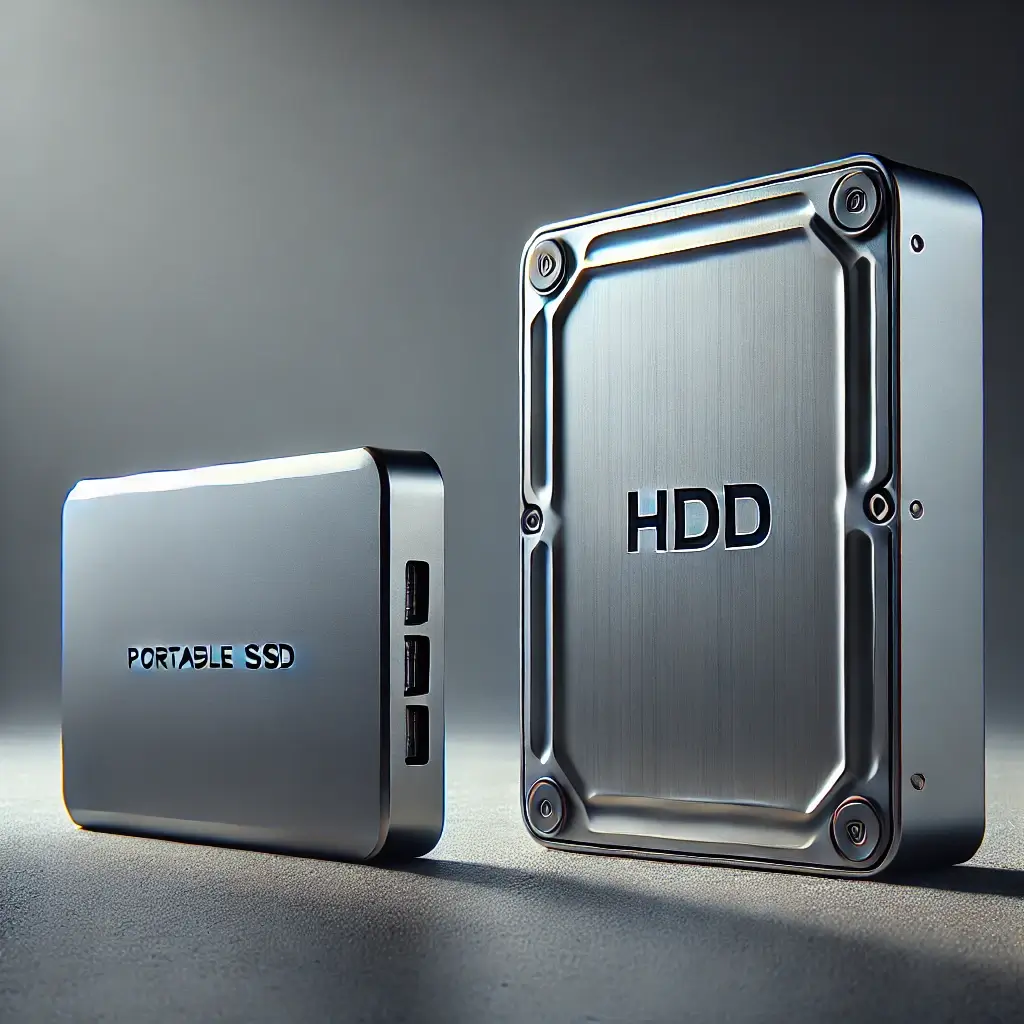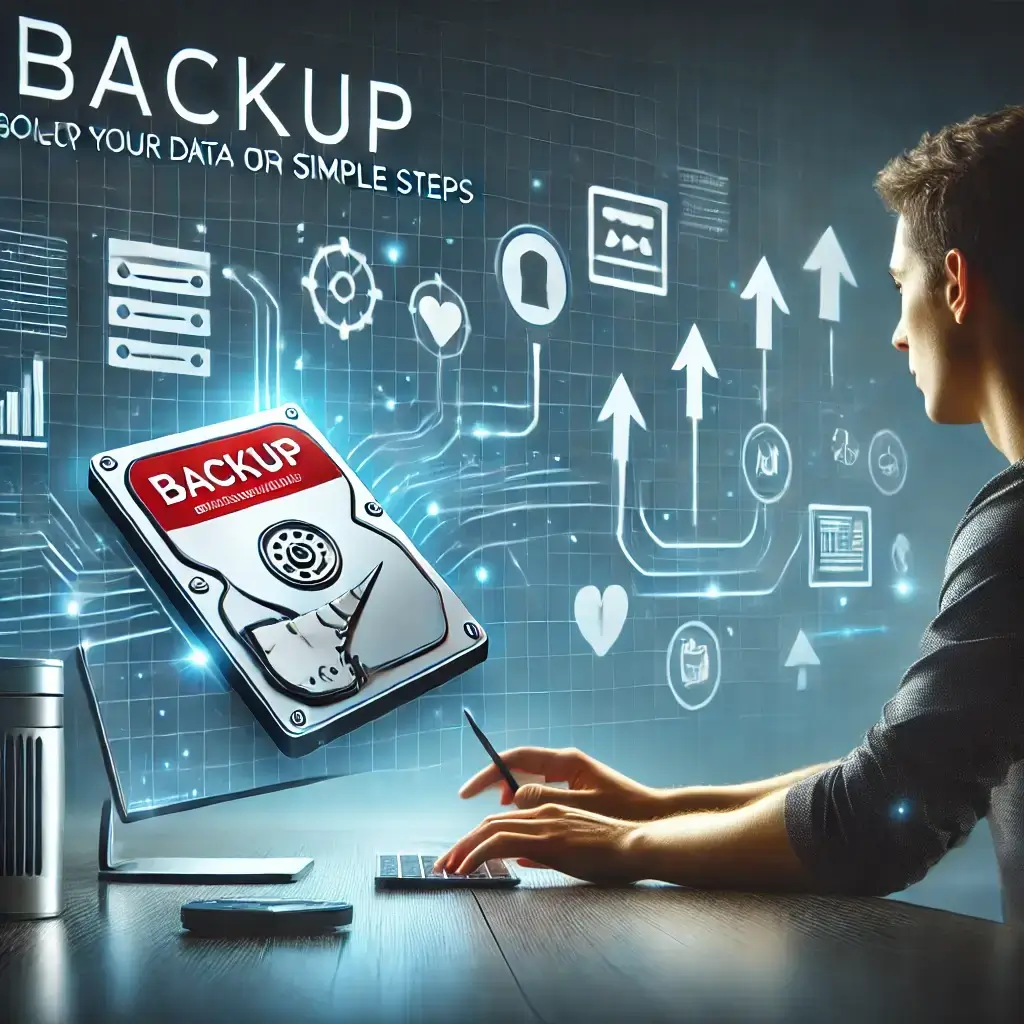1. Introduction
Let’s clear something up right off the bat: What is portable SSD? Portable SSDs aren’t just overpriced USB drives. Many people think they’re unnecessary or complicated, but that couldn’t be further from the truth. In reality, a portable solid-state drive (SSD) is one of the fastest and most reliable ways to store your data—and it’s surprisingly easy to use. Whether you’re transferring files, backing up your system, or simply looking for a better way to manage your storage, a portable SSD device can make your life a lot easier. So, next time someone asks, “What is a portable SSD and why should I use it?” you’ll know exactly what to say.
A portable SSD is essentially a high-speed external storage device that uses solid-state technology. Unlike traditional hard drives (HDDs) that rely on spinning disks to read and write data, SSDs use flash memory. This means they have no moving parts, making them faster, quieter, and more durable.
Think of it like this: an HDD is like a vinyl record player, while an SSD is more like an MP3 player. Both store data, but one does it much faster and with fewer headaches. And when it’s portable? That’s just the cherry on top. You can plug it into your laptop, gaming console, or even some smartphones via USB-C or USB-A ports and start using it instantly
.Keywords naturally used: portable solid-state drive, external SSD storage, lightweight external SSD.

2. Why Do Portable SSDs Matter?
Here’s the thing: in today’s digital world, we’re dealing with bigger files than ever. High-resolution photos, 4K videos, and advanced gaming files can easily eat up your device’s internal storage. That’s where a portable SSD comes in. It gives you:
- Speed: Transferring large files is a breeze thanks to its fast read and write speeds. This is especially helpful for photographers, video editors, and anyone who needs to move data quickly.
- Durability: Since there are no moving parts, portable SSDs are more resistant to drops and shocks. Perfect if you’re always on the go.
- Convenience: Small, lightweight, and easy to carry, they fit right into your backpack or pocket. Ideal for travelers and students.
3. How Does a Portable SSD Work?
A lot of people assume that portable SSDs are too complicated to understand. But the truth is, they’re pretty straightforward. Here’s a simple breakdown of how these devices work and why they’re so efficient.
1. The Technology Behind Portable SSDs
Portable SSDs rely on flash memory to store data. Unlike traditional hard drives that use spinning disks to read and write information, flash memory uses electronic circuits. This allows data to be written and retrieved almost instantly. Since there are no moving parts, SSDs are quieter, faster, and less likely to fail due to mechanical issues.
Imagine you’re saving a file. With an SSD, the process happens in a fraction of the time it would take on an HDD. That’s because SSDs don’t have to physically search for the data location on a spinning disk. Instead, they can access it electronically in nanoseconds.
Keywords naturally used: how does a portable SSD work, solid-state technology, benefits of solid-state drives.
2. Plug-and-Play Simplicity
One of the best things about portable SSDs is how user-friendly they are. All you need to do is connect the SSD to your device using a USB-C or USB-A cable. Most modern devices will recognize it immediately, and you can start transferring files right away—no additional software or drivers needed.
For example, photographers and videographers can connect a portable SSD directly to their cameras (if supported) to store high-resolution images and videos on the go. Gamers can use it to save and run games, reducing load times and improving overall performance.
Keywords naturally used: portable SSD for photographers, external SSD for video editing, SSD for mobile devices.
3. Why It’s So Reliable
Since portable SSDs don’t have moving parts, they’re far less prone to physical damage compared to HDDs. This makes them an excellent choice for travelers, outdoor enthusiasts, and anyone who needs a reliable storage solution in unpredictable environments.
Additionally, SSDs don’t overheat as much as traditional drives, and they consume less power, making them more efficient for mobile devices and laptops. Their durability and reliability mean you can trust them with your most important files.
4. Key Benefits of Using a Portable SSD
Some people still believe that portable SSDs are only worth it for tech enthusiasts or professionals. But that’s a myth. Portable SSDs offer huge benefits for everyone, from students to gamers to everyday users who need reliable storage. Let’s explore what makes them a game-changer.
1. Speed and Efficiency
Portable SSDs are fast—really fast. They’re designed to handle large files in seconds. Whether you’re transferring a 4K video, a massive photo collection, or your favorite games, you’ll notice the difference immediately. SSDs often deliver speeds up to 10x faster than traditional HDDs. This means less waiting and more doing.
For instance, photographers can upload high-resolution RAW images in seconds, while gamers enjoy reduced loading times and smoother gameplay.
Keywords naturally used: fastest external SSD, high-speed external SSD, SSD for file sharing.
2. Portability and Convenience
Need to take your data on the go? Portable SSDs are lightweight, compact, and easy to carry. You can slip one into your pocket, laptop bag, or even a small purse. They’re perfect for students who need to bring projects to class, or business travelers who can’t risk losing important presentations.
Unlike bulky external hard drives, SSDs are built for modern life. Their plug-and-play functionality makes them easy to use anywhere, anytime.
Keywords naturally used: compact portable SSDs for frequent travelers, portable SSD for students, lightweight external SSD.
3. Durability and Reliability
Accidents happen. Whether it’s a coffee spill or a drop from your desk, portable SSDs are built to withstand life’s bumps and bruises. Because they don’t have moving parts, they’re shock-resistant and less likely to fail compared to HDDs.
Plus, their longer lifespan means you won’t have to worry about replacing them anytime soon. For outdoor enthusiasts or anyone in unpredictable environments, a rugged portable SSD is a must-have.
Keywords naturally used: durable portable SSD, rugged portable SSD, external SSD lifespan.
4. Enhanced Security Features
Many portable SSDs come with built-in encryption and password protection. This is a huge benefit for anyone handling sensitive data, like business professionals or researchers. You can ensure your files stay safe, even if your SSD falls into the wrong hands.
For example, some SSDs offer AES 256-bit encryption, one of the highest levels of data protection available.
4. Portable SSD vs HDD: What’s the Difference?
It’s a common misconception that portable SSDs and HDDs are essentially the same, just with a difference in price. But that’s not true. The two storage devices are fundamentally different in how they work, their performance, and even how they affect your day-to-day tasks. Let’s break it down.

1. Speed Comparison
The most noticeable difference between SSDs and HDDs is speed. Portable SSDs are significantly faster when it comes to both reading and writing data. This means transferring a large batch of photos, videos, or files will take minutes—not hours. HDDs, on the other hand, can feel painfully slow, especially when dealing with large amounts of data.
For example, a typical SSD can transfer data at speeds of up to 500 MB/s or more, while most HDDs max out around 150 MB/s. This makes SSDs ideal for tasks like video editing, gaming, and running applications directly from the drive.
Keywords naturally used: portable SSD vs HDD speed, fastest external SSD, SSD for video editing.
2. Durability and Reliability
HDDs rely on spinning disks and moving parts to store and retrieve data. This makes them more vulnerable to physical damage from drops or bumps. SSDs, in contrast, have no moving parts, making them far more durable. Whether you’re traveling or just prone to accidents, a portable SSD can survive situations where an HDD might fail.
In addition, SSDs are less likely to experience data corruption or performance issues over time, as they aren’t subject to wear and tear caused by physical components.
Keywords naturally used: durable portable SSD, rugged portable SSD, external SSD for travelers.
3. Portability and Design
SSDs are typically more compact and lightweight compared to HDDs. This makes them perfect for people who are always on the move. You can easily fit a portable SSD into your pocket or bag without worrying about added weight. HDDs, on the other hand, are bulkier and less convenient to carry around.
Keywords naturally used: compact portable SSD, lightweight external SSD, SSD for frequent travelers.
4. Cost Differences
Here’s where HDDs still have an edge: price per GB. Portable HDDs are cheaper and offer more storage for the same cost as an SSD. However, the gap has been narrowing over the years. Plus, when you factor in the speed, durability, and convenience of SSDs, many people find that the slightly higher price is worth it.
Keywords naturally used: affordable portable SSD, budget-friendly SSD, external SSD cost comparison.
5. When to Choose SSD vs HDD
- Choose an SSD if you value speed, portability, and durability. They’re great for professionals, gamers, and anyone working with large files.
- Choose an HDD if you need a lot of storage at a lower cost and don’t mind sacrificing speed or portability.
Keywords naturally used: SSD vs HDD for storage, portable SSD buying guide, best external SSD for gaming.
6. Who Can Benefit From a Portable SSD?
Many people think portable SSDs are only for tech-savvy users or professionals. But that’s far from true. Portable SSDs are versatile tools that cater to a wide range of people. Let’s break down who can benefit the most from this handy device.
1. Creative Professionals
If you’re a photographer, video editor, or graphic designer, you know the struggle of working with massive files. Portable SSDs make life easier by offering lightning-fast data transfer speeds. You can edit high-resolution photos or 4K videos directly from the drive without any lag. Plus, the durability ensures your work is safe even if you’re on the go.
2. Gamers
Gamers are another group that loves portable SSDs. With games taking up more and more space—some requiring 100GB or more—a portable SSD gives you the extra storage you need. Load times are significantly reduced, and you can carry your game library wherever you go.
Keywords used naturally: SSD for gaming, fastest portable SSD, external SSD for Xbox and PlayStation.
3. Remote Workers and Students
Whether you’re a remote worker juggling multiple projects or a student managing assignments and presentations, a portable SSD is a lifesaver. You can keep all your important files in one place and easily move between devices without worrying about cloud storage limitations.
Keywords used naturally: portable SSD for students, external SSD for work-from-home, SSD for productivity.
4. Travelers and Digital Nomads
For those who are always on the move, portable SSDs offer peace of mind. They’re lightweight, compact, and durable, making them perfect for travelers. You can back up your photos, store important documents, or even stream movies while on the go.
5. Businesses and IT Professionals
Businesses dealing with sensitive data and IT professionals managing large backups can benefit immensely from the speed and security of portable SSDs. They’re great for creating encrypted backups and transferring critical files quickly.
7. How to Choose the Best Portable SSD
Choosing the right portable SSD can feel overwhelming with so many options out there. But don’t worry—I’ll guide you through the key factors to consider so you can make an informed decision.
1. Storage Capacity
Think about what you’ll be using the SSD for. If you’re storing large files like videos or games, aim for at least 1TB of storage. For general backups and documents, 500GB might be enough. Always go for a little more storage than you think you need—it’s better to have extra space than to run out.
2. Speed
Transfer speeds can vary between models. Look for SSDs with read and write speeds of at least 500MB/s for everyday use. If you’re a professional working with large files, aim for speeds above 1000MB/s.
3. Compatibility
Ensure the SSD you choose is compatible with your devices. Most portable SSDs come with USB-C or USB-A connections. Check if the device supports your laptop, gaming console, or smartphone.
4. Durability
If you’re always on the go, durability is key. Look for SSDs with shock resistance or rugged designs. Some models even offer water and dust resistance, perfect for outdoor enthusiasts.
5. Price and Budget
Set a budget based on your needs. While SSDs are generally more expensive than HDDs, the extra cost is worth it for the speed and durability. Look for deals or models that balance performance and price.
6. Brand Reputation and Warranty
Stick with trusted brands like Samsung, SanDisk, or Western Digital. Check the warranty period—most good brands offer at least 3 years, giving you peace of mind.
8. Maintenance and Care for Your Portable SSD
Let’s clear up a common myth: portable SSDs are not maintenance-free. Many people think that because SSDs don’t have moving parts, they don’t require any care. But even though they’re more durable than HDDs, neglecting their upkeep can reduce their lifespan and performance. Here’s how to keep your portable SSD in tip-top shape.
1. Handle with Care
While SSDs are designed to be rugged, they’re not indestructible. Avoid dropping or exposing your drive to extreme conditions like heat or moisture. A shockproof or water-resistant casing can offer extra protection if you’re on the go.
2. Use a Protective Case
Invest in a protective case to shield your SSD from scratches, dust, and accidental damage. Many SSD brands offer compatible cases, but you can also find generic options that work well.
3. Keep Firmware Updated
Manufacturers frequently release firmware updates to improve SSD performance and security. Check your SSD’s official website or included software to ensure your firmware is up to date.
4. Avoid Overloading the Drive
Filling up your SSD to maximum capacity can slow down its performance and reduce its lifespan. Try to keep at least 10-20% of the storage free to allow the drive to function efficiently.
5. Safely Eject the Drive
One of the simplest but most overlooked tips is safely ejecting your SSD before disconnecting it. Pulling the drive out without ejecting can lead to data corruption or loss.
Keywords used naturally: safely eject portable SSD, prevent data loss on SSD, best practices for SSD use.
6. Regular Backups
Even though SSDs are reliable, it’s always a good idea to back up your data. Use cloud storage or an additional external drive to create regular backups, especially for critical files.
9. Conclusion
There’s a common belief that portable SSDs are overhyped or unnecessary for everyday users. But as we’ve seen, they’re anything but. These compact and versatile devices can cater to a wide range of needs, whether you’re a creative professional, gamer, student, or traveler. They combine speed, durability, and convenience in a way that traditional storage solutions just can’t match.
Why Invest in a Portable SSD?
Portable SSDs are the perfect solution for anyone looking to streamline their digital storage. They save time with fast transfer speeds, offer peace of mind with durability, and keep your files secure wherever you go. While they might come with a slightly higher price tag than HDDs, the benefits far outweigh the cost.
A Final Word on Choosing and Caring for Your SSD
Selecting the best portable SSD doesn’t have to be complicated. By focusing on factors like storage capacity, speed, and durability, you can find a device that perfectly suits your needs. And with proper care, your SSD will serve you well for years to come.




